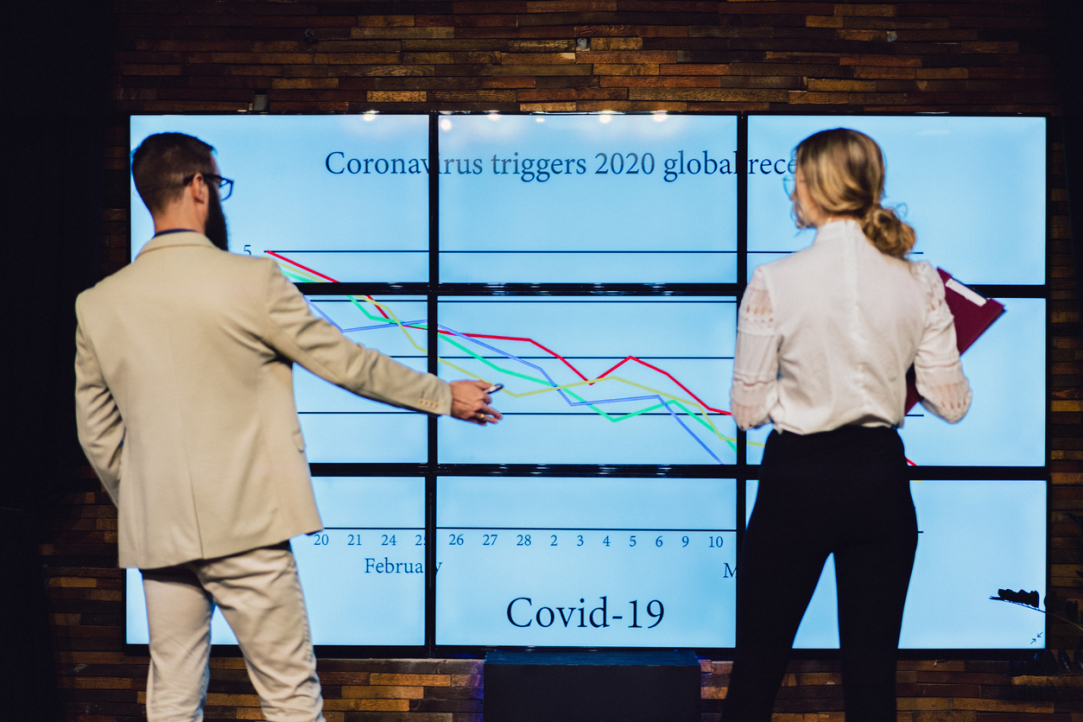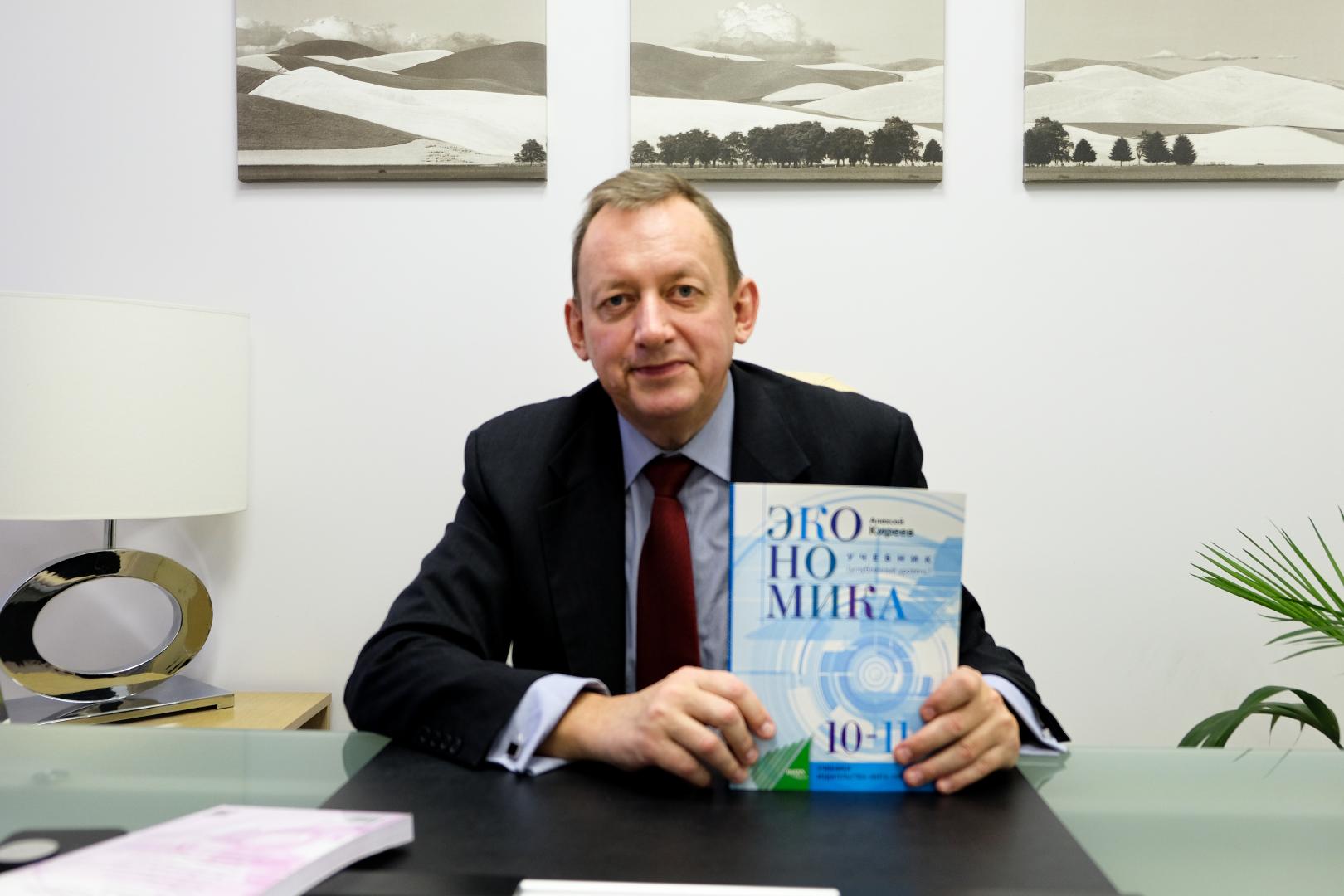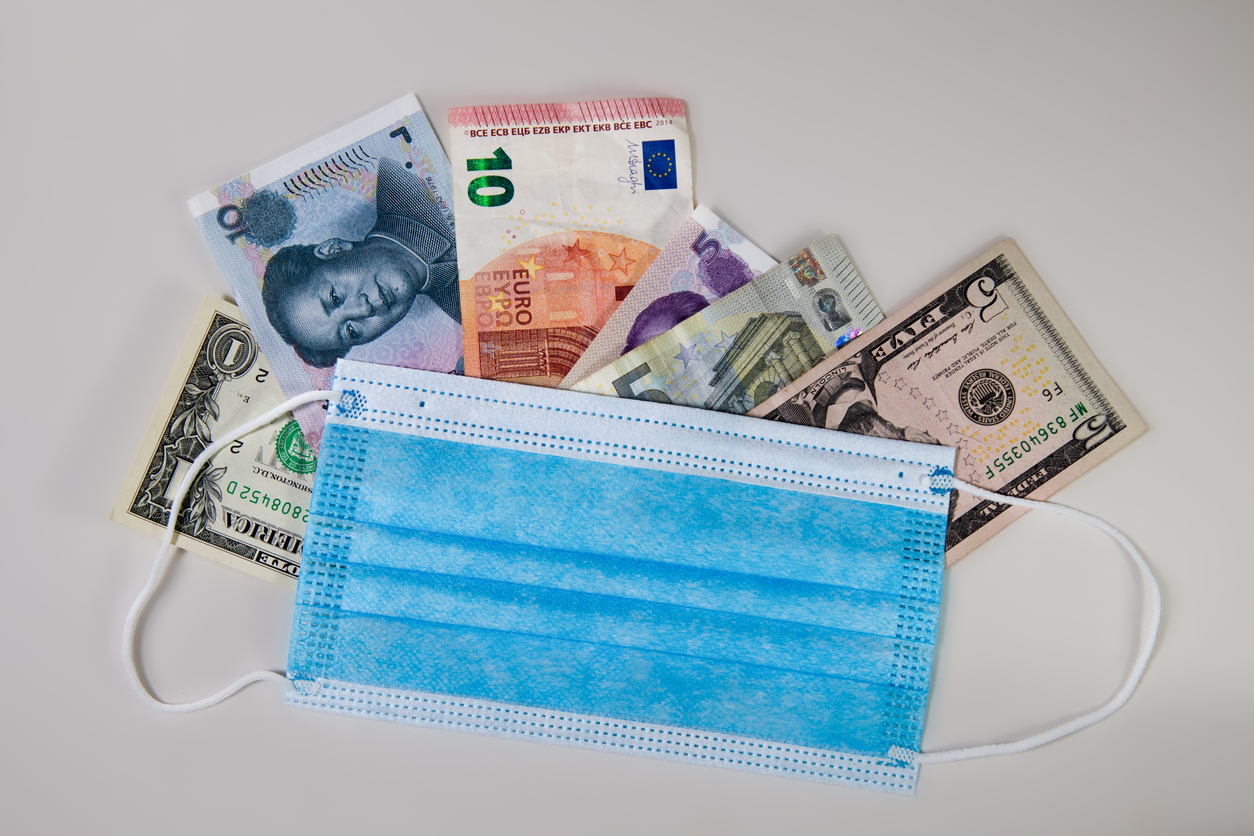Taming the ‘Black Swan’: Who Will Win the Fight Against the CoronaCrisis

Countries with reserve currencies, sufficient fiscal capacity to implement soft fiscal policies, and access to global capital markets have the best chance of recovering from the coronavirus crisis. The rest may need external assistance. These are the conclusions drawn by Alexei Kireyev, leading IMF economist and visiting professor at HSE University’s School of World Economy.
The black swan, as a biological species, is credited with a connection to dark forces, as an omen of crises in the economy; it symbolises unpredictability with far-reaching consequences. Alexei Kireyev reminded us of this during the January scientific seminar ‘How to Tame a Black Swan’. The event was organised by the School of World Economy of HSE University’s Faculty of World Economy and International Affairs.

The professor drew a humorous parallel between the geography of the spread of COVID-19 and the order of the guests' dances after the appearance of black swans in ‘Swan Lake’: the Neapolitan dace, then the Spanish dance, the Hungarian dance, and last — the Russian dance. Incidentally, Tchaikovsky composed the ballet at the height of a cholera epidemic.
In today’s situation, there are sufficient resources and tools, to pacify the ‘black swan’. The countries that produce 90% of the world’s GDP and are home to 80% of the world's population have the power to end the crisis. The states where the remaining 20% of the population live have neither the resources, nor the tools, nor the developed policies to deal with the consequences of the pandemic; they need assistance from the global community.
To what extent can governments cope with the crisis on their own? asks Alexei Kireyev. Many governments, he believes, could not pool their resources into a coherent force and fend off threats, because they do not have the tools to assess their own resources. To assess them, the possibility of budgetary manoeuvre, monetary policy, and the scale of reserves are separately studied.
The status of a country’s national currency plays an important role: countries with a reserve currency have more options than those with a closed currency. If the state maintains a fixed exchange rate, it loses reserve capacity and monetary flexibility. If the country can issue its own reserve currency, the reserve capacity is very large, but so far, inflation is low. However, said Kireyev, this is a somewhat simplified understanding. The IMF statute, indidentally, does not define a reserve currency. It usually refers to a basket of currencies which are used to constitute the reserves of national central banks. This basket includes eight currencies: the Euro, the US dollar, the British pound sterling, the Chinese yuan, the Japanese yen, the Canadian and Australian dollars, and the Swiss franc.

However, there are still questions: whether, for example, the Canadian dollar is a real reserve currency and whether Canada can issue enough banknotes to cover the costs of the crisis; whether the yuan, which is used in settlements between other countries to a limited extent, can be considered a full-fledged reserve currency. According to Alexei Kireyev, only the US and the countries that have swap lines with the US (agreements aimed at maintaining the liquidity of currencies) — a total of six to seven countries — should be considered as having reserve currency status.
Another important factor for accumulating resources to fight the crisis is access to global capital markets. However, if public debt is high, its ability to respond to new challenges raises questions even with access to external financial markets.
Another important indicator of the state’s ability to respond to a crisis is fiscal space, the ability to implement fiscal policy. It is important to understand the limits of increased expenditures and decreased revenues that do not undermine market confidence. The fiscal headroom of countries fluctuates depending on the level of economic development and the quality of tax and other fiscal institutions. A developed country with well-functioning institutions can accumulate a public debt above 85% of GDP, while medium-sized and underdeveloped countries should maintain debt below 75%.
Monetary space should be assessed in terms of the ability to use monetary policy instruments. Right now, in many countries, inflation is below the targets that have been set by central banks. When inflation is low, the regulator can cut the interest rate so that inflation does not exceed, say, 2%, and there is a little monetary space to use money to fight the crisis. However, this is only possible with a floating exchange rate.
A separate point in dealing with the crisis is the accumulation of reserves and reserve space.
After the global financial crisis, many countries took the accumulation of reserves seriously, and when the ‘black swan’ appeared, they exceeded 100% of short-term debt in some countries, which allows three months of financing the import of goods and services
Between 70 and 80 percent of the world’s countries have a solid level of reserves. The question is how and to what extent they should be used. In recent years, there has been a strong belief that reserves are untouchable. They are designed so that in a critical situation a country can pay off loans. However, supporters of this view miss the fact that the main function of reserves is to spend them on a rainy day, and countries can use them at a critical moment. This is especially true of underdeveloped countries, which have about a year's supply of accumulated gold and currency.
At the same time, the current crisis has shown that even economically developed countries need not only financial but also reserves of tangible items — in this case, protective equipment, products and medicines that can be used in a critical period when the economy and production have not yet adjusted to the emergency situation.
In general, Alexei Kireyev assesses the economic situation in the world as fairly stable. He believes that countries can be divided into five groups.
The first group of 11 countries, which includes the U.S., France, Germany, Japan, the Netherlands and others, producing about a third of global GDP, has unlimited resources. They (with the exception of the U.S.) have little debt, have reserve currencies, and do not need aid.
The second group consists of nine countries, including Italy and Spain, which produce 5% of world GDP. These countries have experienced serious turmoil, but thanks to their developed economies and access to international financial institutions, they will also be able to cope with the situation on their own.
The third and largest group of countries — 67 countries that produce about 50% of the world GDP, including Russia, China, Saudi Arabia and Norway — have significant economic and social problems. However, these countries have significant room for manoeuvre due to their considerable monetary and fiscal space and/or accumulated reserves.
The fourth group consists of about 60 countries on different continents with developing or transitional economies, producing about 9% of world GDP. They do not have much room for manoeuvre due to a combination of circumstances, but they can borrow from the Asian or African Development Bank.
The most difficult situation is in 33 underdeveloped countries, which will require help from the whole world and this assistance must be not only financial, but also in kind —with products, medicine, equipment, and medical personnel.
It is important to understand that the government of a country itself is responsible for degrading the space for manoeuvre within the country, especially fiscal and monetary space. We should not blame the outside world for our troubles; we should look for problems in our own actions.
Alexei Kireyev hopes for an optimistic end to the current crisis and the victory of the ‘white swan’. ‘I hope that the end of the year will be better; the macroeconomic conditions are all there,’ he said.
Alexei Kireyev
See also:
HSE Biologists Explain Mechanism behind Coronavirus Evolution
A team of researchers, including scientists of the HSE Faculty of Biology and Biotechnology, have analysed the evolutionary path of the coronavirus from the Wuhan variant to Omicron. Their findings indicate that many genomic mutations in SARS-CoV-2 are shaped by processes occurring in the intestines and lungs, where the virus acquires the ability to evade the inhibitory effects of microRNA molecules. The study findings have been published in the Journal of Medical Virology.
Russian Researchers Explain Origins of Dangerous Coronavirus Variants
HSE researchers, in collaboration with their colleagues from Skoltech and the Central Research Institute for Epidemiology, have uncovered the mechanisms behind the emergence of new and dangerous coronavirus variants, such as Alpha, Delta, Omicron, and others. They have discovered that the likelihood of a substitution occurring at a specific site of the SARS-CoV-2 genome is dependent on concordant substitutions occurring at other sites. This explains why new and more contagious variants of the virus can emerge unexpectedly and differ significantly from those that were previously circulating. The study’s findings have been published in eLife.
HSE Biologists Prepare Strategy for Universal COVID Test
Russian researchers have developed a strategy to create a cheap and rapid COVID-19 test based on isothermal amplification. According to their publication in Applied Biochemistry and Microbiology, use of this strategy will make it possible to create universal test systems for any of the COVID-19 variants.
People’s Values Affect Their Attitudes to COVID-19 Restrictions
HSE social and political analysts have established which value models and circumstances promote support for restrictive government policies aimed at combatting the coronavirus pandemic. The research is published in Plos One.
Model of Predator-Prey Relationship Helps Predict Spread of COVID-19
Researchers from the HSE Faculty of Economic Sciences have proposed a mathematical model that describes the course of the COVID-19 pandemic, taking into account the restrictions applied in different countries. The model will help governments make reasonable and timely decisions on introducing or lifting restrictions. The paper was published in Eurasian Economic Review.
HSE University Classes to Be Held On Site for All Students
Classes in the new academic year will take place on site for students of all HSE University campuses. Existing COVID safety precautions will remain in effect.
Russian Scientists Investigate the Immune Response to SARS-CoV-2 Variants
HSE University researchers assessed the effectiveness of the T-cell immune response to 11 variants of SARS-CoV-2. Their findings have been published in Nucleic Acids Research.
First-year Students Will Be Able to Get COVID Shots at HSE University
The new regulations ‘On the Organization of Studies for the 2021/2022 Academic Year’ feature in detail what will change for first-year students in the new academic year. HSE University will be organizing a vaccination drive in September for students aged 18 and over who are unvaccinated. Younger students will be eligible for vaccination once they turn 18.
New Safety Measures to Be Introduced at HSE University
Starting September 1, 2021, HSE University-Moscow is introducing new safety policies on campus to prevent the spread of COVID-19. They apply to students over 18 years old who have not had COVID during the last six months, have not been vaccinated (with a Russian or a foreign vaccine), nor have a medical exemption from vaccination. Free vaccination will be available on campus to all arriving students.
HSE University Creates the Viral Genealogy Simulator to Model the Spread of COVID-19
Researchers of HSE Tikhonov Moscow Institute of Electronics and Mathematics (MIEM), in cooperation with their colleagues from the University of California, Santa Cruz (UCSC), and The European Bioinformatics Institute (EMBL-EBI), have developed software to model the spread of the COVID-19 global pandemic. This is the world’s fastest Viral Genealogy Simulator (VGsim). For more details about this scalable simulator, read the reprint on medRxiv. The code is freely available at GitHub.


